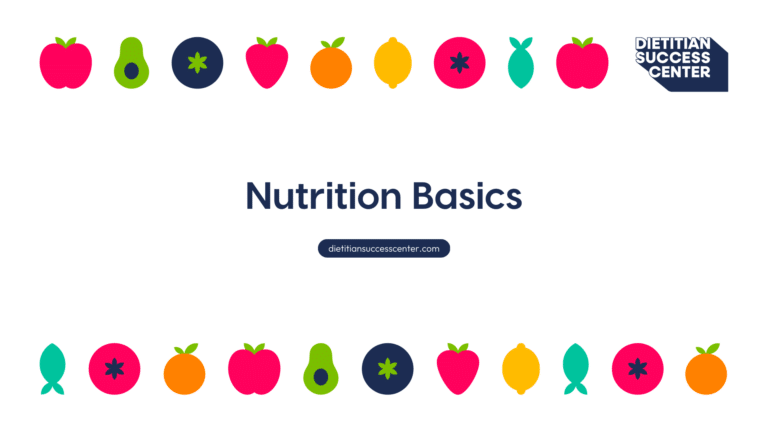
Youtube Transcript: How to Read a Nutrition Label for Kids.
Hey there, today we’re jumping into the world of nutrition facts tables. Those little boxes on food and drink packages that tell us about the foods we eat. Are you ready to join us on an adventure to level up your food knowledge and discover how to read these labels in just five steps?
Let’s get started! Have you ever looked at the Nutrition Facts table before? Let’s take a look together. What spot on the table do you think we should look at first? Lots of people will say calories, sugar, or fat, but there’s actually a step that goes before this. The serving size. And that’s where we start our journey with Step 1, the serving size.
The serving size is our starting point. It tells us how much food we’re actually talking about here. Picture it like our transportation on our journey. Are we traveling in a big boat, car, or bike? Or a little toy boat, car, or bike? This will make a big difference to how far we can go on our adventure. It’s the same with food and drinks.
The serving size tells us if we need to do some math with the numbers on our facts table. If we’re eating one cup of soup, then these nutrition numbers are based on this amount. But if we’re going to eat two cups of soup, we need to multiply all of these nutrition numbers by two. Hey, can you bust this brain teaser?
What if we’re going to eat half a cup of soup? What would we do to our nutrition numbers? We would divide by two, which will divide all of the numbers in half. Now that we know how we’re going to travel on our adventure, let’s move on to the next step. Step two, meet the nutrients.
As we move down the label, you’ll see calories next. Calories act like fuel for your body, similar to how gas acts like fuel for a car. tells you how much fuel you get from one serving of the food or drink. But wait, there’s more! The fuel for our body is made up of big blocks and little blocks.
We call these blocks nutrients. The big blocks include fats, carbohydrates, and protein. And the little blocks include things like saturated fats, sugar, fiber, sodium, potassium, calcium, and iron. But, how do we know if we’ve got the right amount of big blocks and little blocks? Well, that brings us to step three, crack the percent daily value code.
You may be wondering, what is the percent listed along the side of the table? This is the percent daily value. Those numbers act like a secret code to tell you how many big blocks you’re getting, and how many little blocks you’re getting.
Want to learn how to crack the code? If the percent number is less than 5, it’s a little. If the percent number is more than 15, it’s a lot. Brain teaser time! If the percent daily value is 22, is this a little or a lot? Answer, it’s a lot. Now, let’s move on to step number 4, choose your blocks.
Now we’re going to choose which blocks we want more or less of. For most people, the blocks, or nutrients, we want more of, that act as a power boost for our bodies are fiber, potassium, calcium, and iron. Some blocks, like sodium, which is the same as salt, sugar, and saturated fat, can add fun and flavor to our foods.
But having too much of these blocks all the time can slow us down on our adventures. So we want to make sure and balance these blocks with our power booster blocks. Let’s break down what each of our power booster blocks do. Fiber usually comes from beans, vegetables, fruits, whole grains, nuts, and seeds.
Fiber helps to keep you fuller for longer, so you’re not feeling super hungry between meals. It also helps keep your gut working well, so you can have healthy poops that aren’t too hard or uncomfortable. Everyone loves having healthy poops. Potassium is usually found in fruits and vegetables and milk.
It’s important for your heart and your muscles. Calcium can be found in milk, cheese, tofu, and leafy greens. It’s important for your bones, teeth, and heart. Iron is found in meat, seafood, some cereals, and beans. Iron helps keep your brain working properly and helps you have healthy blood, which is important to keep the whole body healthy.
What about the blocks or nutrients we want less of? Let’s just talk about added sugar. Sugar can be a little bit confusing. Too much added sugar can be hard on your body. We don’t need to stop eating all sugars. Sugar actually helps to give us energy. But there are certain types of sugar that we want to include less of.
Added sugars. The reason why sugars are tricky is because the nutrition facts table doesn’t tell us if the sugar is added or natural in a food. Usually, sugar that is natural in food comes with other bonus power boosters like vitamins. Usually, sugar that is added to food doesn’t come with any bonus power boosters.
Let’s look at an apple. It has 18 grams of sugar. Do you think this sugar was added to it or is it natural? It’s natural! Apples also have other power boosters like fiber and plenty of vitamins. What about a can of soda pop? One can has about 25 grams of sugar. Do you think this sugar was added or is natural?
It was added! The can of pop can be a nice refreshing drink sometimes, but it doesn’t come with any power boosters. So we want to choose other nutritious foods and drinks more often. How do we tell if sugars have been added or if they’re natural? The ingredients list can help to tell you whether the sugars are added to a product.
If sugar is listed as an ingredient, it was added. Ingredient lists are in order of quantity, so if sugar is the first ingredient or close to the top, it’s the most plentiful. Can you spot added sugar on this ingredient list? There it is! So we know that sugar was added because it’s listed as an ingredient.
That brings us to step five, the last step in our journey. Compare foods. Now that we know all about Nutrition Facts Table reading, we can compare the labels on two different foods to decide which one will give us the best power boosts. We’re going to test our skills on Rainbow Loop Cereal versus Oatmeal to decide which one we want to choose.
By the way, all foods can be part of healthy eating. We want to choose foods with more power boosters more often. These are our everyday foods and include foods like fruit, vegetables, milk, meat, beans, and nuts. But we also have our sometimes foods. These are foods that tend to have less power boosters, but we can still enjoy them sometimes.
These include foods like candy, soda pop, chips, and ice cream. Are you ready to test out your new Nutrition Facts Table reading skills? Let’s go! This is a Nutrition Facts Table from a box of cereal. Let’s take a look and run through our five steps. Step number one, check the serving size. For this box of cereal, the serving size is one cup or 30 grams.
If you make a fist, that’s about the size of one cup. Now, step two, uncover the big nutrient blocks. If we eat one cup of this cereal, we will get 120 calories, decimal one gram of fat, 27 grams of carbohydrates, one gram of protein, and so on. Remember, if we have more or less than one cup, we would have to do some math to figure out our nutrient numbers.
Let’s move on to step three. Look at the percent daily value to decide which nutrients this food has a lot or a little of. On the right side of the table, you can also see the nutrition facts. If you were to eat this cereal with milk as a reminder, 5% or less is a little, and 15% or more is a lot. So this food has a lot of sugar, 16% and a lot of iron, 22% iron is one of our power boosters, and this food has a little sodium or salt 3% fiber 4%.
potassium 1 percent and calcium 0%. Step number four, choosing which nutrients you want more or less of. So let’s just say you want more fiber and you want less added sugar. But how do we know if sugar was added to this food? When we look at the ingredient list, we can see sugar is listed as the second ingredient.
This brings us to step five, where we can compare the food with another one to choose the best option for us. Let’s compare these rainbow loops with 4 percent fiber and 16 percent sugar to oats for oatmeal.
So for oats, we get 0 percent sugar and 14 percent fiber. And if we look at the ingredient list, the only ingredient is whole grain oats, so there’s no added sugar. So if I’m looking for an option with less sugar and more fiber, I’m better off choosing the oats. And then I can add some more power boosters for flavor like fruits, peanut butter, or pumpkin seeds. On our adventure today, we’ve explored the secrets of the Nutrition Facts Table. Let’s recap our journey. The Nutrition Facts Table is like a map, guiding us to discover the nutrition in our favorite foods and helping us make choices. Remember, the serving size is our starting point, and we need to adjust the nutrition numbers based on how much you’re going to eat or drink.
We want to aim for 15 percent or more for fiber, potassium, calcium, and iron. These are our power boosters that keep our bodies strong and ready for any quest. For a balanced adventure, aim for 5 percent or less of saturated fat, added sugar, and sodium. And keep an eye on the ingredient list to spot added sugars.
If sugars are near the top of the list, there is more of them in the food or drink. Every food can be part of healthy eating. Enjoy many foods, especially the power boosters that keep you going strong. Now armed with your Nutrition Facts Table skills, you’re ready to conquer any food quest that comes your way.
Happy exploring!






![How to Read a Nutrition Label in 5 Simple Steps [Health Canada Nutrition Facts Label]](https://dietitiansuccesscenter.com/wp-content/uploads/2024/05/2-1-768x432.png)
